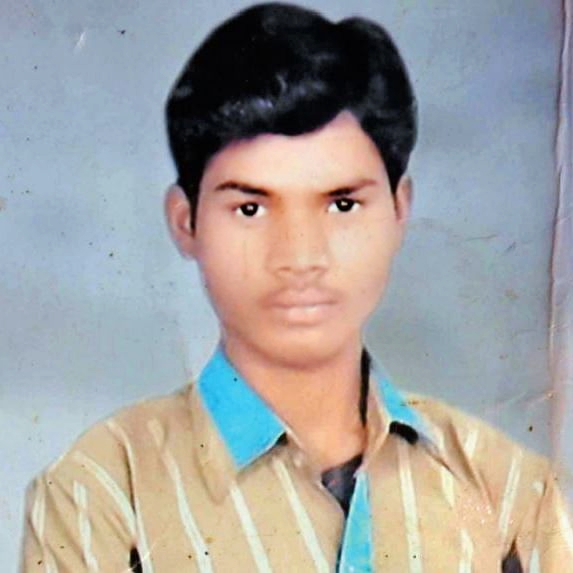Economic vulnerability and social acceptance has led not just to the prevalence but also made combating the practice of bonded labour difficult in areas of Madhya Pradesh
Last year on 6 November, a heart-wrenching incident took place in the Uakavad khurd village under Bamori police station of Madhya Pradesh. A 28-year-old man Vijay Sahariya was burnt alive over non-payment of a loan of Rs 5,000 that he had borrowed three years ago from his employer Radheshyam Lodha.
Vijay’s family claims that he was working as a bonded labourer in Lodha’s field for the past three years to pay off the loan he took.
Vijay was called to Radheshyam’s field on the pretext of watering them.“I told him (Vijay) to have chapatis, but he went without eating, saying Radheshyam told him that he has arranged food,” says Vijay’s wife, Ramsukhi. “He was watering Radheshyam’s field but was killed just for Rs 5,000. We could have repaid the amount slowly.”
“Radheshyam was angry because Vijay was also working somewhere else, whereas Radheshyam wanted him to work only in his field until he repaid the loan,” says Kallu Adivashi, Vijay’s father.
This incident created a buzz in the media and brought into focus the prevalence of debt-based bonded labour in the area.
The Executive Director of Bandhua Mukti Morcha (BMM), a Delhi-based NGO working to end the practice of bonded labour, Nirmal Gorana claims that bonded labour is rampant in Guna, especially among the Sahariya tribe.
The district administration doesn’t think this was a case of bonded labour. As per a report in the Indian Express, Guna collector Purshottam Kumar denied that Vijay’s case was that of bonded labour.

However, this was not the first case of bonded labour reported in Guna. In September, a Sahariya couple lost their 8- year- old child because their employer allegedly trapped them after they took a loan of Rs 25,000 some five years ago.
The BMM has filed two PILs in the Gwalior High Court against the use of bonded labourers in the region. Advocate Gunjan Singh, who is also representing BMM in an email response said, “The case is pending since 2016 and no effective orders have been passed yet despite our best efforts. It is at the stage of final hearing and we intend to finally argue the matter.”
Patriot interacted with workers of BMM in Guna, who have been working against debt-based bonded labour. One such worker Kamal Singh Adivasi, who himself was a bonded labourer for several years, believes that in Bamori block thousands of bonded labourers are working in precarious conditions.“In Bamori block, around 80 panchayats are of Adivasis and in every village 50-60 bonded labourers are working in the fields of dominant caste groups like Meena, Sardars (Sikhs), Dhakad.” he says.
“The younger generation of agricultural employers are cruel due to aspirations related to material wealth, which was not the case when we were working. Our employers were not that cruel. I was released when I completed around 15 years of work in my employer’s field”, he adds.
Despite the claims made by the locals, there has been no government study on bonded labourers in Guna. The presence of Particularly Vulnerable Tribal Group (PVTG), Sahariyas, a landless tribe that works as agricultural labourers and dominant caste groups who need cheap labour for agriculture has created conditions where debt-based bonded labour flourishes.
The 2011 census estimates that around 1,35,000 are working as bonded labourers, making it the most common form of slavery in India, while the Global Slavery Index estimates that in 2016 there were nearly 8 million people living as modern slaves in India and that there were 6.1 victims for every thousand people stuck in bondage.
Most often, workers fall into the trap of bonded labour due to want of financial resources, which are provided by creditors. However, when they are unable to pay, creditors force the individuals to work for them to pay off the loan. Lack of education and socio-economic pressure often leads to such labourers working for years without pay or for sums well below the mandated minimum wage.
Hajarilal and Gulabi Bai, a couple from Dhimarpura village of Bamori Block took a loan of Rs 50,000 from a person named Om Prakash some five years ago. “We have been working in his field for five years. Now the loan should be reduced, but he is asking for two lakh rupees. From where we will give him the amount?” The couple say that they even lost child of 18 months because their employer did not pay them. “My child needed medical attention but we didn’t have money to take care of him”, says Gulabi bai.

Another important factor, other than loans, central to this kind of slavery is ownership of land. The Sahariya tribe in MP don’t have much land holdings and education. “You find hardly anyone from upper caste under bonded labour,” says Gorana. This is one of the most backward tribes and mostly work as agricultural labourers.
India abolished bonded labour in 1976 when the Bonded Labour System (Abolition) Act came into force, it is also prohibited under Article 21 and 23 of the Constitution. But in reality, this practice has not ended. The practice has assumed new forms, different from earlier physical bondage. In modern times as this law also entails, when a debtor mortgages his or his family’s service for a specified or unspecified period it is called bonded labour. Creditors often make the labourers work for long periods of time with little to no pay while disallowing any other form of employment. Like in Vijay’s case, his employer Radheshyam was angry about his working for another employer.
In 1992, the Supreme Court, while hearing a writ petition (People’s Union for Democratic Rights vs. Union of India) clarified, “When a person provides labour or service to another against receipt of remuneration which is less than the minimum wage, he is acting under some force of some compulsion which drives him to work though he is paid less than what he is entitled under law to receive.”
So, it is clear that non-payment of fair wages or taking extra labour may stem from some force or compulsion and loans are the major source of that.
However, since these agricultural labourers in Guna are part of the informal sector, and the bonded labour practised has cultural acceptance it is hard to prove in many cases that a person is a bonded labour as contracts are often informal or established through word of mouth.
Unfortunately, even the common understanding of bonded labour is archaic, it is still seen as “physical bondage.” Modern form of bondage, what professor Ravi Srivastava calls “neo-bondage” is different. This bondage can be limited for a smaller period until a loan is paid, or a season and employers may not necessarily keep them in physical bondage but in psychological bondage.
Though a Central Sector Scheme for Rehabilitation of Bonded Labourers has been in place since 1978, which provides for financial assistance for rescued bonded labourers. The need of a rescue certificate issued by the District Magistrate (DM) creates problems in the crucial task of identification and rehabilitation of bonded labourers. Members of BMM say that local administration often doesn’t help and deny incidences of bonded labour “against which we have been fighting for years.”
Also, financial assistance is not enough. As Kamal Singh says, “When a rescued bonded labour goes back to his village, it is likely that he will fall into the same trap again.”
This story is supported by @inoldnews and @internews





